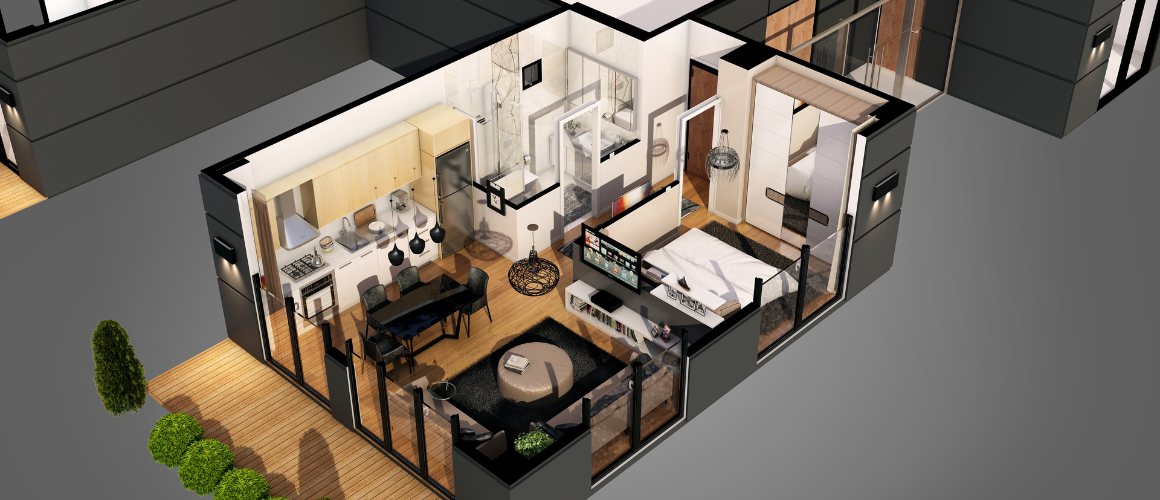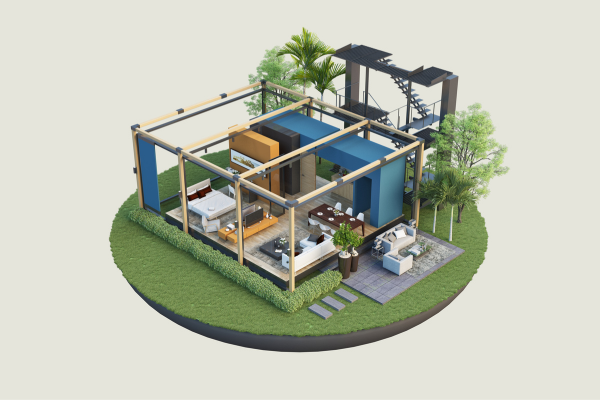
Breaking Barriers in Building Design with BlenderBIM
Imagine this: buildings and projects coming to life with the help of a tool everyone can use, change, and share. That's the new wave in the world of building and design, thanks to open-source solutions like BlenderBIM. This tool is a game changer. It's not just any software; it's a free add-on for Blender, making high-quality 3D modeling, animation, and rendering accessible to all. But BlenderBIM isn't just about making things look good. It's about building smarter, working together without the barriers of costly software, and creating a world where anyone, anywhere, can contribute to the architecture of our spaces. This is where we're heading – a future crafted by collaboration, innovation, and open-source freedom. Welcome to the journey of BlenderBIM, where openBIM is paving the way for everyone to play a part in shaping our built environment.
Building designs used to live on paper, trapped in blueprints and drawings. Then came computers, changing how we create and think about buildings. This shift started what we know as Building Information Modeling, or BIM. BIM wasn't just a new tool; it was a whole new way to build. It let architects, engineers, and builders see the same design, share ideas, and spot problems early. But there was a catch. Most BIM software was locked down, expensive, and didn't play well with others.
Enter openBIM. It's like the friendly neighbor of BIM software. openBIM said, "Let's all get along," making it easier for different programs to talk to each other using a common language called IFC (Industry Foundation Classes). This was big. Now, whether you're using one program or another, you can share your work, no barriers. It's like everyone speaking the same language at a big international conference.
openBIM didn't just break down walls between software; it started a movement towards openness and collaboration in building design and construction. With openBIM, small firms and independent designers got a seat at the table, able to compete and collaborate on big projects without breaking the bank. The rise of openBIM is a story of how sharing and openness can transform an industry, making it more inclusive, innovative, and efficient.
BlenderBIM is like a bridge in the vast world of architecture, engineering, and construction (AEC). It connects different lands - design, visualization, and building information modeling (BIM) - using a tool everyone loves: Blender. Imagine having one tool that lets you sketch your dream building, animate how it's built, and manage all the complex details that go into construction. That's BlenderBIM.
Before BlenderBIM, using BIM software felt like being in exclusive clubs with expensive memberships. Small firms and independent architects often found the cost too high and the rules too restrictive. BlenderBIM changed the game. It's free, open to everyone, and incredibly powerful. With BlenderBIM, you're not just renting your tools; you own them. You can tweak and share them, creating a community where everyone helps everyone else.

BlenderBIM isn't just about making things easier; it's about making them better. It supports openBIM, which means it uses universal formats like IFC. This ensures that what you create can be used and understood by anyone in the AEC industry, no matter what software they prefer. It's like building with LEGO blocks instead of custom parts; everyone can join in the fun.
But BlenderBIM isn't standing still. It's constantly growing, with a community of users and developers adding new features and smoothing out any rough edges. It's this community that's the heart of BlenderBIM, driving its evolution and making sure it meets the needs of real-world projects.
In essence, BlenderBIM is more than software. It's a movement towards a more open, collaborative, and sustainable building industry. It's about giving the tools of creation to everyone, breaking down barriers, and building a future where the best buildings are made by the best ideas, not the biggest budgets.
In the hands of architects and builders, BlenderBIM is not just software—it's a key to unlock new possibilities. Picture this: a small architectural firm takes on a big project. They use BlenderBIM to model the building, layer by layer, brick by brick. But it doesn't stop there. They simulate lighting to see how the sun lights up rooms at different times of the day. They even check if the building is eco-friendly, all before laying the first stone.
Next, imagine a team working on different parts of a project—architects, engineers, and construction managers. Before, they would struggle to merge their work, leading to delays and headaches. With BlenderBIM, they share their models in a common format (IFC), making collaboration seamless. Issues are spotted and fixed early, saving time and money.
BlenderBIM also dives into the details that matter. For instance, when planning a building, it helps manage the nitty-gritty, like scheduling construction phases and estimating costs. And when the building stands tall, BlenderBIM doesn't just walk away. It helps with managing the building, making sure it remains a safe, pleasant place for everyone inside.
For those who love to learn and share, BlenderBIM is a goldmine. Its open-source nature means there's a vibrant community out there, always ready to help, share tips, and create tutorials. This community isn't just about solving problems; it's about pushing boundaries, making BlenderBIM better every day.
In short, BlenderBIM brings the AEC industry closer to the future—a future where buildings are smarter, projects run smoother, and everyone, from big companies to individual designers, has the tools they need to shine.
The future of architecture and BIM (Building Information Modeling) is unfolding right before our eyes, and it's as exciting as a plot twist in a sci-fi movie. We're moving beyond static blueprints into a world where buildings breathe, think, and even "speak" through digital twins and smart sensors. Imagine a building that adjusts its temperature based on the weather outside or the number of people inside. That's not a dream; it's the future we're building with technologies like BlenderBIM.

One of the biggest trends is the push towards sustainability. Architects and builders are using BIM to design buildings that not only use less energy but also contribute positively to the environment. BlenderBIM, with its open-source approach, is at the forefront, enabling small and large firms alike to innovate without the burden of hefty software costs.
Digital twins are another game-changer. They create virtual replicas of physical buildings, allowing for real-time monitoring and management. This technology, combined with BIM, can revolutionize how we maintain and optimize building operations, making our spaces safer and more comfortable.
Collaboration is also getting a major upgrade. The future is in projects where architects, engineers, contractors, and clients work together seamlessly, thanks to platforms like BlenderBIM that support open standards like IFC. This means fewer mistakes, lower costs, and faster completion times.
In all, the future of architecture and BIM is about breaking down barriers—between disciplines, between stages of construction, and between the digital and physical worlds. With open-source tools like BlenderBIM leading the way, we're not just building better; we're building smarter and more together.
As we've journeyed through the evolving world of BIM and the pioneering role of BlenderBIM, it's clear we stand on the brink of a new era. BlenderBIM isn't just software; it's a beacon for the future of the AEC industry, heralding a more open, collaborative, and innovative approach to building design and construction. It empowers everyone from solo architects to large construction firms to contribute their best work, breaking down the barriers that once made high-level BIM tools exclusive. The drive towards sustainability, the embrace of digital twins, and the strengthening of collaborative workflows all signal a bright future for our built environment. As we continue to navigate this exciting landscape, the role of open-source tools like BlenderBIM will only grow, ensuring that the future of architecture is not just about buildings, but about building a better world together.
Dive into the world of BlenderBIM and join a community that's reshaping the future of architecture. Whether you're a seasoned professional or just starting out, your voice matters. Explore BlenderBIM, share your insights, and together, let's build a more open, sustainable, and collaborative future in architecture. Start your journey today.